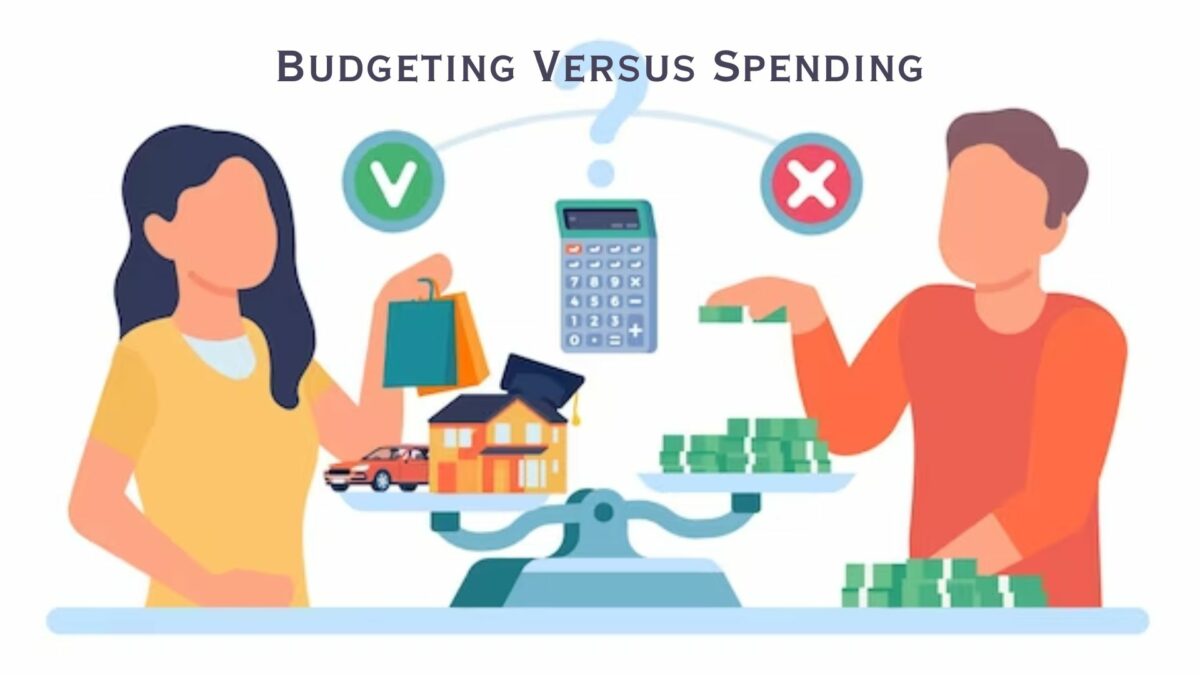“It doesn’t matter what your name is!”
–The Rock

Should your budget be changeable like this?
Occasionally, I get questions regarding rules of thumb for spending, such as what percentage of your income should you spend on housing or food or entertainment. While it’s easy to come up with plug-and-play formulae for all of your spending, doing so doesn’t address the true purpose of budgeting.
What, then, is the true purpose of budgeting, and does it really matter if you have a budget in the first place?
Read on to find out more.
When I graduated from business school, I got a well-paying job at Capital One. I also had six digits worth of student loan debt that I wanted to get rid of as quickly as possible, and we had just purchased a new house to add to the liabilities on our family’s balance sheet.
But, between us, we made plenty of money to pay down extra on the student loan, replenish our liquid assets, and have money left over at the end of the month for investing. It was an enviable position.
While we didn’t quite squander it, we certainly didn’t do as well as we could have done.
As I tell in the article “Don’t Wait Until the End of the Month to Save”, we planned on putting money that was left over at the end of the month into our investments. Somehow, every month, we put less in than we thought that we should.
It was because we didn’t use a budget.
We finally got budget religion after going through Dave Ramsey’s Financial Peace University. While there are many areas where I disagree with Dave Ramsey, he did get us motivated to get rid of the rest of our debt – which, at that point, consisted of a mortgage – and we realized in taking the course that the way to get there was by budgeting.
Since we were so focused on paying off the mortgage, I was an absolute stickler for sticking to everything in the budget. If groceries cost more than we expected, then we took money out of the restaurant budget. Max out the budget? No soup for you!
Eventually, once we paid off the mortgage and were completely debt free, we loosened up the reins on spending a little. Our approach reflected a different attitude towards budgeting.
The Two Approaches to Budgeting
The basic premise of a budget is to make sure that you don’t spend more than you earn. It seems like a simple idea, but once Monkey Brain sees money in the account, he’ll spend it like it’s going to disappear. He doesn’t care about the future and ensuring that you don’t dumpster dive when you’re old and decrepit (“Help! I’ve fallen in the dumpster and I can’t get up!”). That’s a long way down the road. He wants happiness now. The budget is a way to keep him in his cage.
Additionally, it serves to make sure that you pay your fixed expenses. Fixed expenses are ones that come around every month, like the mortgage and car payment (if you have one, and you should do everything you can to get rid of your debt), the electric bill, and other utilities. The variable expenses are the ones that can change each month. Some months, you need to buy clothes and some months, you don’t. You might eat out more in a given month and less in another. What you don’t want to do is load up on the variable expenses (“Whoo! Restaurant Week is now Restaurant Month!”) and then run out of money for the fixed expenses (“Um…we don’t need no stinkin’ electricity!”).
To achieve that goal, there are two approaches to budgeting:
Every dollar has a name
I don’t just mean George and Benjamin. This is the budget approach often called zero-based budgeting (ZBB). For every dollar that you earn in a given month, you put it to some category, whether saving or spending. When you subtract income minus expenses, the result should be $0.
The most commonly cited zero-based budgeting example is the envelope system. You allocate an amount of money for each category that you’re going to spend money on in the month, and then you put that amount of money in an envelope labeled with that category. If you want to spend more in a given category, then you need to take money out of one envelope and put it into another envelope.
Who is this for?
This is budgeting with training wheels. As long as you stick to the envelopes or the categories, you can’t stray very far. Therefore, the following types of people are best served by zero-based budgeting:
- People who are in consumer debt. Choices got you into a position where you owe money to other people because you couldn’t spend less than you earned. You may eventually get to a point where you’re capable of working in a less constrained plan, but as long as you’re in consumer debt, you should stick to a more disciplined approach.
- People who need structure and boundaries. You may be the type of person who says “tell me what to do and I’ll do it.” This approach is perfect for you if you’re that type of person, because it tells you what you can spend and where you can spend it.
- People who like routine and certainty. When you use the zero-based budgeting approach, you’re pretty much going to have the same spending patterns month after month. You know what’s going to happen next month because it’s going to look a lot like this month looks. If that provides you with comfort and security, then use zero-based budgeting.
The target number
This method is much less complicated than the zero-based budgeting approach. It starts out the same way: determine how much you’re setting aside for investing (hopefully, at least SAFEMIN) and your fixed expenses.
Once you have those numbers out of the way, the remainder is the limit for how much you can spend in a month.
An example of this is a family that were clients of mine. They wanted to know two things: what would it take to retire by a certain age and could they afford to have a second child. Once we determined their target number and how much they’d need to save each month in order to achieve that goal, we looked at how much it would cost to raise each child and to put the children through college.
But, I told them, as long as they were saving for their retirement, paying the mortgage, and putting money aside for college for the kids (one of their top priorities), it didn’t matter how they budgeted the rest. It was up to them to figure out. They knew what they had to play with each month. If they could make it work, then they could afford additional children.
This method is less prescriptive and more flexible. Stay below your target, and you’re fine. It assumes that money is fungible – it doesn’t have a specific name and a specific purpose – and as long as you’re setting aside money for your priorities and goals, then you can spend the rest however you want.
Who is this for?
- People who are comfortable automating their finances. If you can automate paying your fixed expenses and your investing, then the rest becomes your monthly slush fund. You can’t make a mistake as long as you don’t spend when you don’t have money.
- People who keep track of their spending. If you’re the type who balances your checkbook daily and knows how much you have, then this method will work for you, as you’re not at risk of overdrafting your accounts.
- People who are not prone to retail therapy or binge spending. If you can keep Monkey Brain in his cage and ignore the howling coming from back there, then this method will work well for you. You can alter what you spend on each month as needs and wants change.
- People who have strong self-discipline. Since this method doesn’t put constraints on different categories, it can be tempting to run free. If you have a strong sense of self-discipline and won’t spend beyond your target, then you don’t necessarily need to budget for every category.
- People who have a good sense of their what monthly spending is. If you have a wildly varying spending pattern from month to month, then the temptation will be to spend at the high water mark and never go back down. However, if your spending is fairly consistent from month to month, then you have a rough sense of what you should be spending anyway.
We still budget out our spending for each month, but once we’ve established the budget, we pull out the money we need to for our purchases and put it in one envelope.
Yup, that’s our envelope.
Author Profile
- John Davis is a nationally recognized expert on credit reporting, credit scoring, and identity theft. He has written four books about his expertise in the field and has been featured extensively in numerous media outlets such as The Wall Street Journal, The Washington Post, CNN, CBS News, CNBC, Fox Business, and many more. With over 20 years of experience helping consumers understand their credit and identity protection rights, John is passionate about empowering people to take control of their finances. He works with financial institutions to develop consumer-friendly policies that promote financial literacy and responsible borrowing habits.
Latest entries
 Low Income GrantsSeptember 25, 2023How to Get a Free Government Phone: A Step-by-Step Guide
Low Income GrantsSeptember 25, 2023How to Get a Free Government Phone: A Step-by-Step Guide Low Income GrantsSeptember 25, 2023Dental Charities That Help With Dental Costs
Low Income GrantsSeptember 25, 2023Dental Charities That Help With Dental Costs Low Income GrantsSeptember 25, 2023Low-Cost Hearing Aids for Seniors: A Comprehensive Guide
Low Income GrantsSeptember 25, 2023Low-Cost Hearing Aids for Seniors: A Comprehensive Guide Low Income GrantsSeptember 25, 2023Second Chance Apartments that Accept Evictions: A Comprehensive Guide
Low Income GrantsSeptember 25, 2023Second Chance Apartments that Accept Evictions: A Comprehensive Guide

